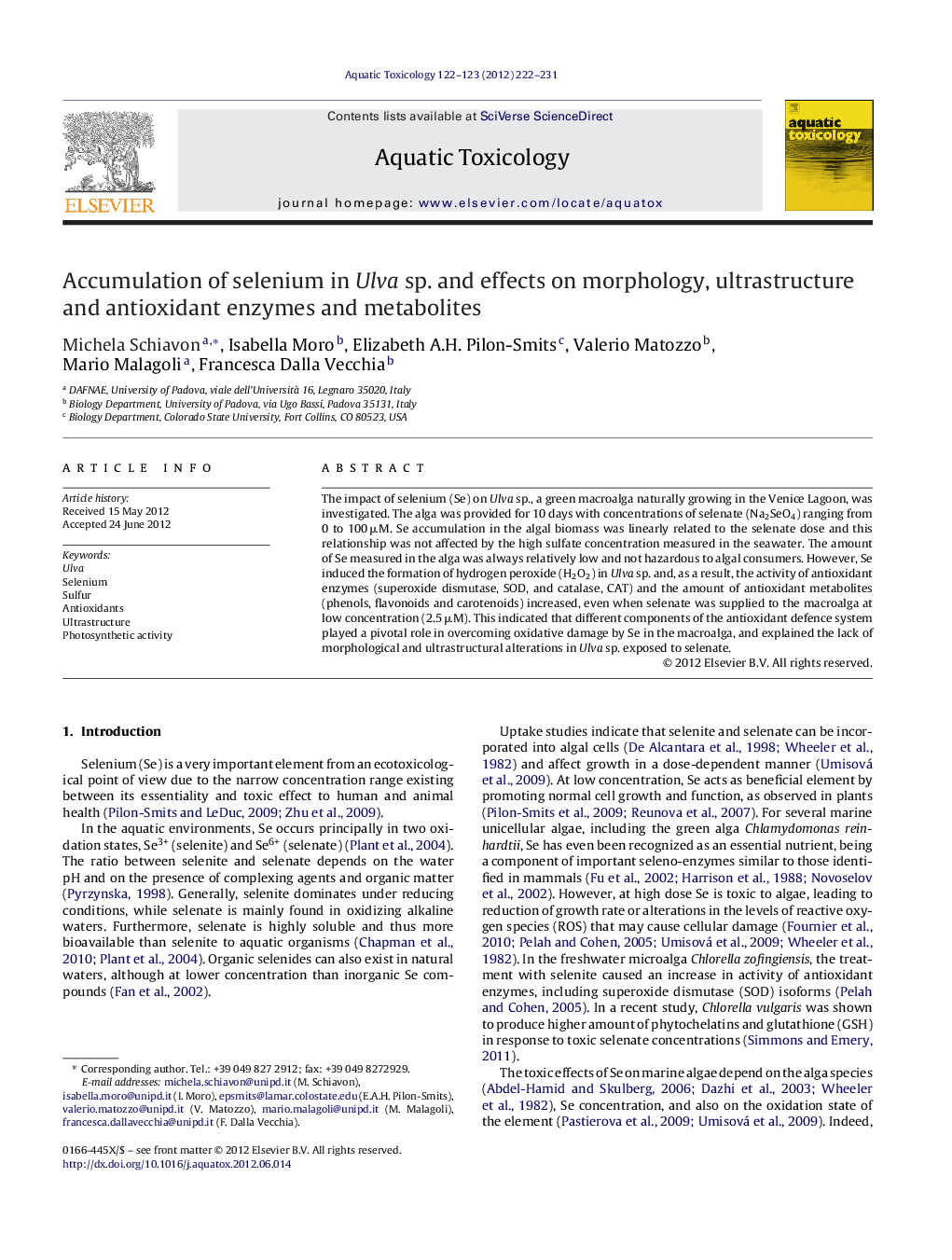| Article ID | Journal | Published Year | Pages | File Type |
|---|---|---|---|---|
| 4529662 | Aquatic Toxicology | 2012 | 10 Pages |
The impact of selenium (Se) on Ulva sp., a green macroalga naturally growing in the Venice Lagoon, was investigated. The alga was provided for 10 days with concentrations of selenate (Na2SeO4) ranging from 0 to 100 μM. Se accumulation in the algal biomass was linearly related to the selenate dose and this relationship was not affected by the high sulfate concentration measured in the seawater. The amount of Se measured in the alga was always relatively low and not hazardous to algal consumers. However, Se induced the formation of hydrogen peroxide (H2O2) in Ulva sp. and, as a result, the activity of antioxidant enzymes (superoxide dismutase, SOD, and catalase, CAT) and the amount of antioxidant metabolites (phenols, flavonoids and carotenoids) increased, even when selenate was supplied to the macroalga at low concentration (2.5 μM). This indicated that different components of the antioxidant defence system played a pivotal role in overcoming oxidative damage by Se in the macroalga, and explained the lack of morphological and ultrastructural alterations in Ulva sp. exposed to selenate.
► Ulva sp. was provided with concentrations of selenate ranging from 0 to 100 μM. ► Se accumulation by Ulva sp. depended on Se dose and interfered with S metabolism. ► The resistance of Ulva sp. to Se was due to its capacity to keep cellular Se low. ► The antioxidant defence system is crucial to contrast oxidative damage in Ulva sp.
